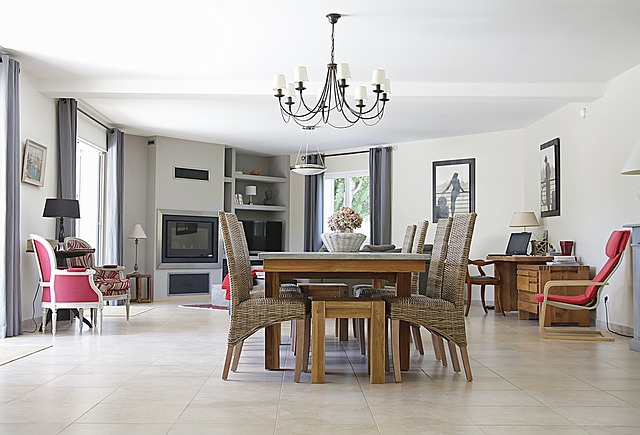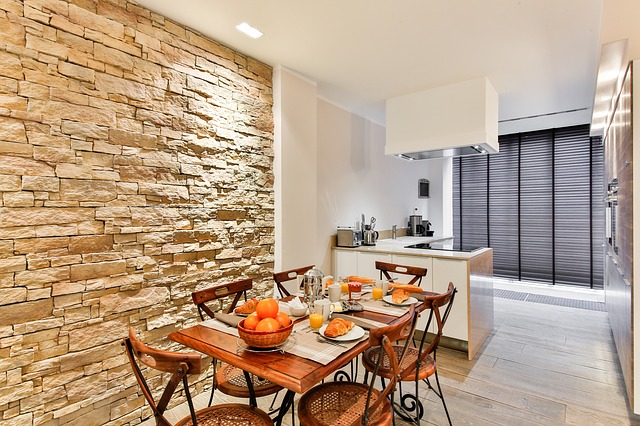Modern design has a lot of different incarnations. In its simplest terms, modern interior design refers to the reflection of the modern art movement on the interiors of the home. There is a range of central characteristics and design themes seen throughout a modern design.
Modern design refers to what is popular or used right now. Modern design can be very peculiar for that reason, because it can borrow pieces and styles from all different eras. It doesn’t have to be something that is “designed” right now.
Right now a modern home can incorporate large windows, unique or odd shapes, open plan and harmony with the surrounding landscape. Moreover, the finishes would use a lot of natural elements such as fir or cedar and stone. The finishing details and furniture are in-ornate and use clean lines. Comfort and sustainability are key values that are important in a modern home.
In this post from Brickell Avenue Interior design firm, MsME Interior Design, we go through some important components of Modern Interior Designs.
Use natural material for both interior & exterior
Natural materials need not be reserved for just wood furniture. Your modern home can make use of natural and organic materials in decking outside, leather furniture for your interiors and simple decorative elements displayed throughout your home. In many modern designs, one can witness a new sense of using organic materials such as wood, rock, slate, teak, cotton, wool, and other gorgeous textiles in furnishings and not just reserved to traditional home uses.
Color Concepts
Modern design is typically offset by neutral colors. When painting your walls you’ll want to choose shades of brown, taupe, cream or pure white. You can also spice up your room by painting one wall with an accent color, adding a bold colored sofa and choosing small, yet vivid decorative accessories, like pillows, area rugs, lighting fixtures and artwork. However, it must be remembered that you should not clutter your space because the key to modern design is simplicity.
Metal Concepts
Metals like stainless steel, nickel and chrome are very popular in modern design, as they provide a sleek finish and clean look. One can easily accent a home by choosing stainless steel appliances for your kitchen. Also, when it comes to your kitchen and bathroom faucets, there are various metal finishes to choose from. For home accents consider using metal for furniture pieces, lamps, shelves and artwork so that the style looks consistent from room to room.
Technology in modern homes
One of the areas of modern home design that everyone adores is the “hidden details”. The details of wireless and remote access controls for controlling electronics, heating/cooling systems, lighting, security etc. are all hidden behind the beautiful details.One should try bringing innovative controls into home lifestyle and see how much modern home will feel. Technology has become the defacto luxury details to add to modern homes.
Bring light into interiors
Modern and Post Modern design periods began to emerge in the 1920’s-1960’s . A break was observed from the traditional dark interiors with closed –off rooms and small windows. Light and airy rooms replaced the small ones and these details can be adopted in a modern home. Opt for choosing the right floor plan that let in natural light through floor to glass windows, skylights, solar tubes and use translucent glass for privacy areas.
Use of fabrics
Try to add texture and create a more natural and inviting setting use fabrics such as silk, crushed velvet, linen or wool. Accents like fabric window treatments, furniture upholstery, over-stuffed pillows, area rugs and linen wallpaper are a great way to offset the clean, smooth lines of the metal accents. When choosing fabrics, stay away from elaborate patterns as they will distort the clean, contemporary look you are trying to get.
Open floor plan for Interior
Modern homes have a sense of uniting all of the interior spaces into one grand experience. The term “great room” is used by various designers to signify a blurring of the distinct walls and boundaries of living spaces with the kitchen, family room, etc. Moreover, an open floor plan is ideal and is iconic in modern homes and creates a unified design aesthetic throughout your home.
Lighting Up Your Design
Lighting is very important in any modern design, because it is the key to illuminating the room’s design. There are many lighting choices available to provide interesting, clean lines to accent your modern design. Popular fixtures include track lighting, pendants and floor lamps.
Wood Tones to modernize your home
When it comes to choosing wood surfaces, modern designs usually feature very light or very dark tones. With a huge range of woods, finishes, designs and stains to choose from, you can easily create a unique floor design. Your only limitation could be your imagination and budget. Another way to incorporate wood into your interior design is to use large wooden flowerpots, shelves, picture frames, end tables and floor lighting. The key to an effective modern design is to be consistent with your accents and not to clutter your living space.
Traditional spaces tend to be full, both visually and physically. Modern spaces, on the other hand, embrace simplicity in adornment. Modern interiors are clean and fresh, perhaps with a hint or two of color added.





 How to7 years ago
How to7 years ago


 More4 years ago
More4 years ago


 More6 years ago
More6 years ago


 Interview4 years ago
Interview4 years ago


 Other Internet Tech6 years ago
Other Internet Tech6 years ago


 More6 years ago
More6 years ago


 Business Ideas6 years ago
Business Ideas6 years ago





